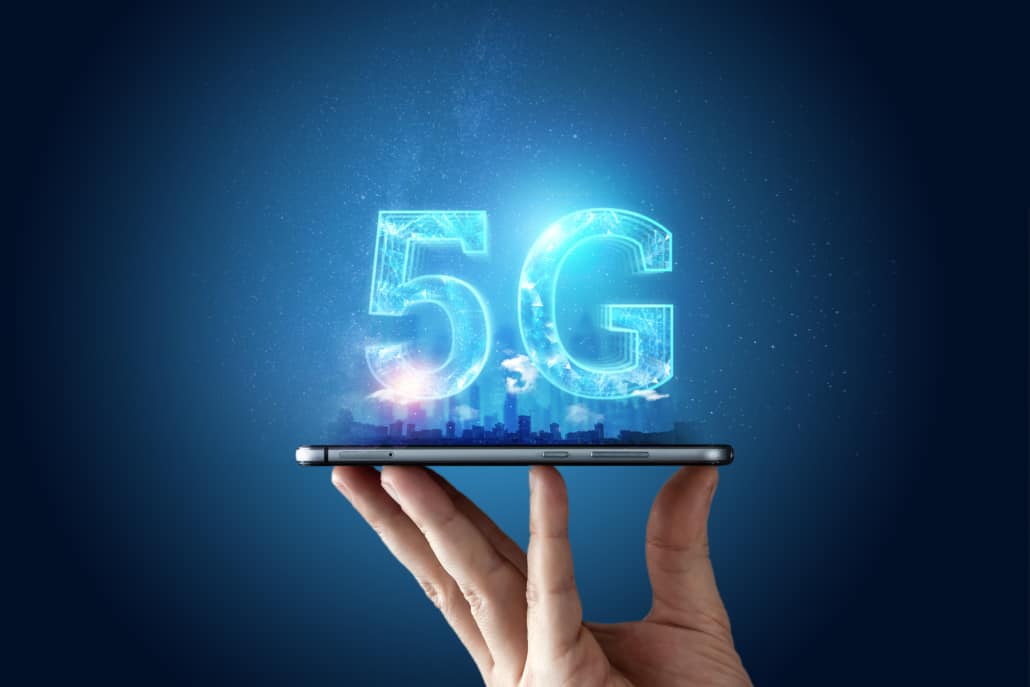The 5G Future: 5G’s Impending Impact on the Cell Phone Industry

No topic is more prominent in the mobile industry today than 5G. While opinions on 5G’s impact vary. There’s no denying that 5G networks will shape how the world communicates and consumes media in the decade ahead.
As of summer 2020, all major carriers in the United States have active 5G networks. AT&T, T-Mobile, and Verizon have all promised speeds that are 10 to 20 times faster than current 4G speeds. The real 5G breakthrough on a mainstream consumer level may come. When Apple launches what is speculated to be its first 5G iPhone next week. That makes this the perfect time to see what analysts. And insiders think 5G’s impact will be on the cell phone industry.
What a 5G World Looks Like
“Broadly speaking, 5G brings some big changes to cell phone networks. The simple summary is that those networks will start to look a lot more like the way the big Internet companies build networks,”. Speculates industry analyst and Nodle CFO, Jay Goldberg. From an industry perspective, Goldberg sees more companies setting up their own cellular networks to assert control over how data is integrated across operations. For individuals, 5G will usher in an era of blending devices and reality like never before.
“More bandwidth should translate into faster download speeds. This is great for video streaming services as it should help improve video quality,” notes Goldberg. Goldberg also sees the lower latency offered by 5G as a catalyst for popularizing augmented reality (AR). Because it will reduce the “mismatching” between movements and screens that currently detract from the experience. We can expect users will be looking for graphics that can keep up with the new “experiential” possibilities opened up by this speed;. However, Goldberg is also keeping in mind that advancements in 5G and. AI are completely separate due to being on different developmental paths.
Some analysts see the arrival of 5G as a “perfect storm” since so many companies have transitioned to work from home environments. A desire among people to be connected from home may create more early adopters than originally anticipated. “I think that with 5G being rolled out quicker than previously anticipated with the amount of people still working from home, some will be choosing to do so now on a permanent basis,” shares Rorie Devine, Founder and CEO at GRO.TEAM. Devine also sees the connectivity issues so many people have had while working from home in 2020 as a gateway for 5G to gain mass acceptance.
5G from the Customer Perspective
Customers will reach new horizons for connectivity that make it impossible to “go back” once they’ve gotten a taste. The most obvious change for 5G users will be that streaming and connecting to content will be easier to do from anywhere. But how will that translate to customer behavior? “It will be easier to find an unlimited data plan and won’t require you to connect to a WIFI network,” speculates Mark Rapley, Director of Operations of KWiC Internet. According to Rapley, this will put carriers in the position to match customers’ demand for unlimited data plans. Users will also be able to use their phones to connect to the cloud and stream video from any location.
Is 5G Really a Cause for Pure Optimism?
It’s easy to get the impression that the widespread introduction of 5G will mean the end of latency and connectivity issues. While 5G will solve many problems, it won’t be a problem-free solution. In fact, many experts are anticipating somewhat of a bumpy road as providers and carriers learn to wield such a new and powerful resource. The newness of 5G means that both unanswered and unimagined questions regarding security hover in the air.
“Due to 5G’s newness, many security vulnerabilities have not yet been thoroughly analyzed,” shares Dr. Nir Kshetri of the University of North Carolina, Greensboro. “A group of researchers identified 11 different vulnerabilities with 5G protocols.” The following is a look at just some of the nefarious goals hackers could potentially accomplish if they’re able to exploit known 5G vulnerabilities:
- Expose a 5G user’s location.
- Downgrade service to an older generation data network.
- Put a device in limited-service mode.
- Track calls.
- Track texts.
- Track online activity.
It’s actually the heavily-touted faster speeds of 5G that make it so much more vulnerable to attacks. As Dr. Kshetri points out, greater 5G functionality means greater functionality for cyberattackers who are able to facilitate a huge amount of data flow between machines. According to Dr. Kshetri, the risk is also amplified by the fact that 5G networks are more likely to use edge computing that places computing, networking, and storage closer to data-generation points. Unfortunately, these edges may lack security that protects them against hackers who install “back doors” to intercept or manipulate data.
Once reports of hacks become known, customers will increasingly look to carriers to provide security features and updates. Those purchasing secondhand or refurbished phones may be more vigilant about sourcing wiped phones that are “clean slates” without potential back doors for data siphoning. Buyers will also be looking for fully functional and compliant phones that are able to complete security upgrades.
The Final Takeaway: Devices Will Become Even More Essential for Our Lives
5G will ultimately blur the line between our screens and our reality due to reduced latency and more reliable connectivity. Customers will increasingly be viewing phones as fully immersive, portable entertainment devices as 5G makes augmented reality more accessible. In addition, 5G’s reach and lightning-fast downloads will help to increasingly turn cell phones into portable work machines at a time when working from home has reached a fever pitch. Increased reliance on phones for handling sensitive data will increase demands for secure networks and devices. The increased importance of phones to our day to day lives will continue to support the industry for secondhand smartphones for years to come.








